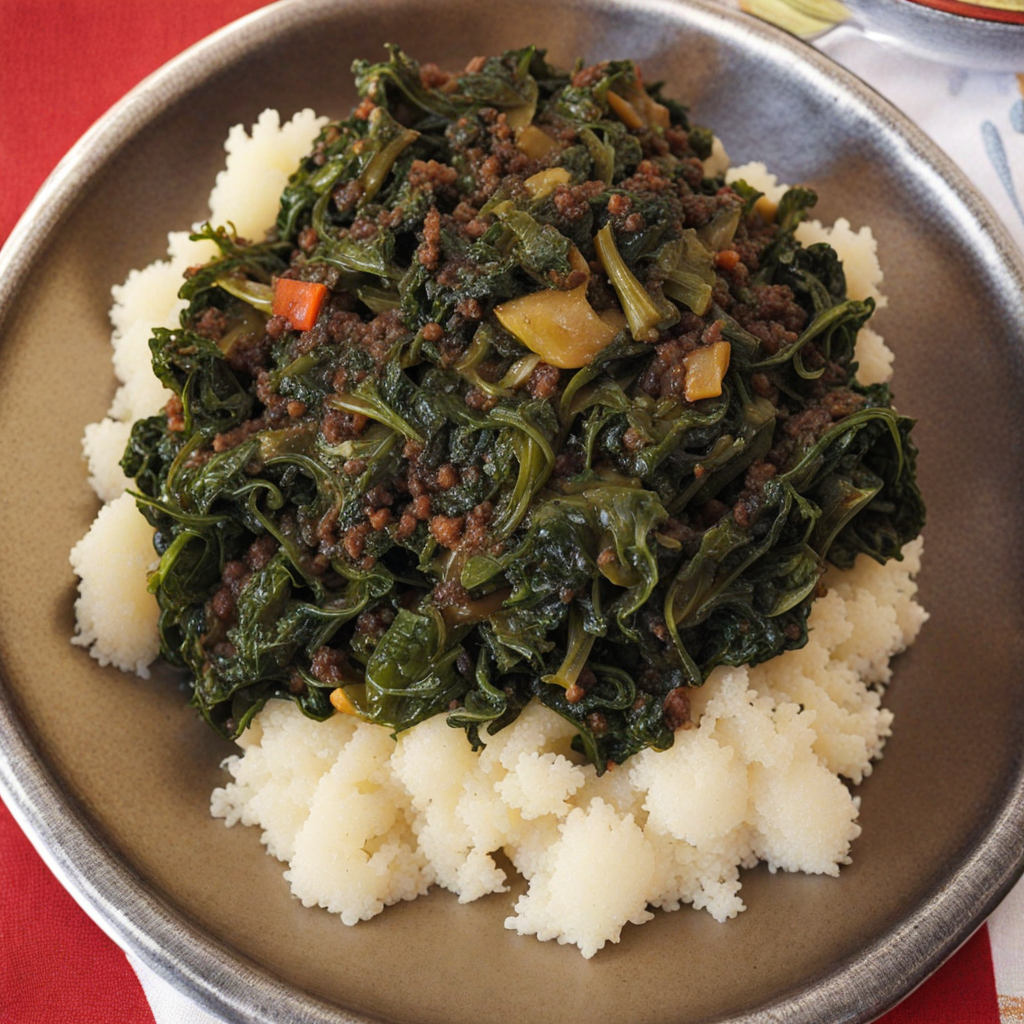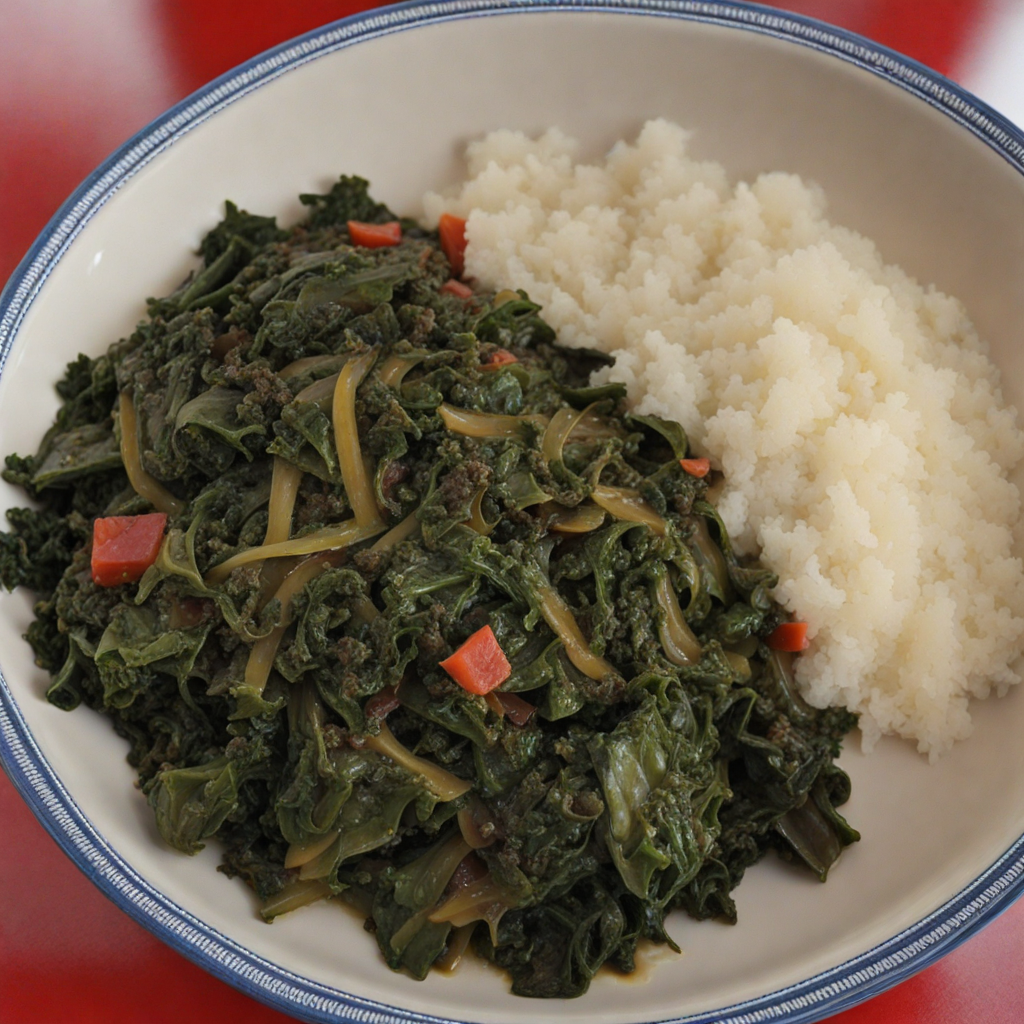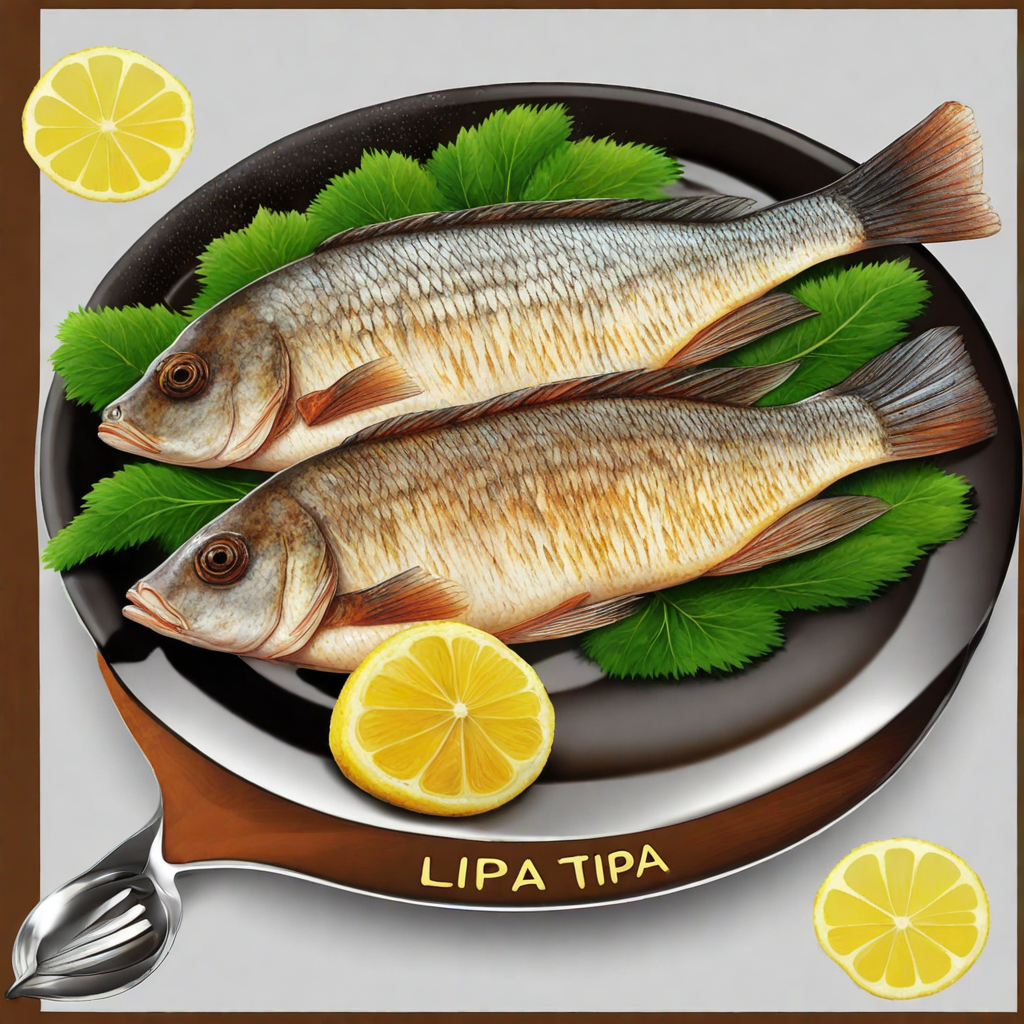Sukuma Wiki
Sukuma Wiki is a vibrant and nutritious dish that represents the heart of Kenyan cuisine. At its core, it consists of collard greens, which are sautéed to bring out their rich, earthy flavors. The name "Sukuma Wiki" translates to "push the week" in Swahili, symbolizing its role as a staple food that helps stretch the family budget throughout the week. This dish is typically cooked with onions, tomatoes, and spices, creating a delightful medley of flavors that not only nourishes but also satisfies the palate. The greens are tender yet retain a slight crunch, providing a satisfying texture that complements the other ingredients beautifully. In addition to its simplicity, Sukuma Wiki is often served alongside various accompaniments, such as ugali, a stiff maize porridge that acts as a perfect base for scooping up the greens. The combination of the savory, sautéed collard greens with the neutral flavor of ugali creates a harmonious balance that elevates the overall meal experience. Sometimes, Sukuma Wiki is also paired with grilled or stewed meats, adding an extra layer of richness to the dish. The vibrant green hue of the collard greens makes for an appealing presentation that is both inviting and appetizing. This dish not only offers a wonderful taste but also embodies the Kenyan spirit of resourcefulness and community. It is a popular choice for family gatherings, demonstrating the importance of sharing food and flavors among loved ones. Sukuma Wiki is versatile and can easily be modified with different spices or ingredients, making it a canvas for culinary creativity. For those looking to explore new taste sensations, Sukuma Wiki is a delicious and healthy option that captures the essence of Kenyan home cooking.
How It Became This Dish
Origin of Sukuma Wiki Sukuma Wiki, a popular vegetable dish in Kenya, primarily consists of collard greens, known scientifically as Brassica oleracea. The name “Sukuma Wiki” directly translates to “push the week” in Swahili, reflecting its role as a staple food that helps stretch household budgets and provide sustenance throughout the week. The origins of Sukuma Wiki can be traced back to the agricultural innovations of the East African region, where collard greens were cultivated due to their resilience and nutritional value. The cultivation of collard greens likely began in the highlands of East Africa, where the climate is conducive to growing leafy greens. Over time, the dish became integral to Kenyan cuisine, often served alongside ugali (a stiff porridge made from maize flour) and a variety of meat stews. This pairing not only provides a balanced meal but also showcases the agricultural bounty of the region, demonstrating how local produce can be incorporated into daily diets. \n Cultural Significance Sukuma Wiki holds a special place in Kenyan culture, symbolizing nourishment and affordability. It is a dish that transcends social classes; whether in affluent urban centers or rural villages, Sukuma Wiki is a common feature on dining tables. The dish embodies the spirit of community and togetherness, as it is often shared among families and friends during meals. Moreover, the preparation and consumption of Sukuma Wiki are steeped in tradition. Families often gather to prepare the dish, with older generations passing down their cooking techniques to younger members. This communal aspect reinforces family bonds and preserves cultural heritage. Additionally, Sukuma Wiki is often served during significant events, such as weddings and communal gatherings, highlighting its role in social celebrations and cultural practices. \n Development Over Time As globalization and urbanization have influenced food practices, Sukuma Wiki has evolved, adapting to contemporary culinary trends while maintaining its traditional roots. In urban areas, the dish has become more versatile, with cooks experimenting by adding various spices, tomatoes, and even proteins like eggs or meat to enhance flavor and nutrition. This adaptability has allowed Sukuma Wiki to remain relevant in the fast-paced lifestyles of city dwellers. Furthermore, the rise of health consciousness among Kenyans has led to a renewed appreciation for Sukuma Wiki as a nutritious option. The dish is rich in vitamins A and C, calcium, and iron, making it an excellent choice for health-focused individuals. With the increasing availability of organic produce, many urban dwellers are now opting for locally sourced collard greens, supporting local farmers and promoting sustainable agricultural practices. \n Regional Variations While Sukuma Wiki is a staple across Kenya, regional variations exist that showcase local ingredients and culinary practices. For instance, in the coastal regions, Sukuma Wiki might be prepared with coconut milk and spices, giving it a unique flavor profile distinct from the mainland versions. In contrast, in the northern regions, the dish may be accompanied by local grains or legumes, reflecting the agricultural diversity of the area. These regional adaptations not only enhance the dish's flavor but also demonstrate the richness of Kenyan culinary traditions. Such variations are a testament to how local cultures and environments shape food practices, making Sukuma Wiki a dynamic dish that evolves with its people. \n Modern-Day Popularity In recent years, Sukuma Wiki has gained international recognition as part of the broader trend of African cuisine becoming more mainstream. With the advent of social media and food bloggers highlighting traditional dishes, Sukuma Wiki has found its way onto global platforms, attracting attention from food enthusiasts and chefs alike. Many restaurants, both in Kenya and abroad, have started incorporating Sukuma Wiki into their menus, often presenting it alongside other traditional dishes to offer a complete Kenyan dining experience. The dish's popularity has also been bolstered by the growing interest in vegetarian and plant-based diets. As more people become aware of the health benefits of leafy greens, Sukuma Wiki has emerged as an appealing option for those seeking nutritious and affordable meal choices. This trend is further supported by the Kenyan government’s initiatives to promote local foods, encouraging citizens to embrace traditional ingredients and cooking methods. \n Environmental Impact and Sustainability Sukuma Wiki is also significant in discussions about food sustainability and environmental conservation. The cultivation of collard greens requires relatively less water compared to many other crops, making it an environmentally friendly choice. Additionally, the local production of Sukuma Wiki supports agricultural biodiversity, as many Kenyan farmers practice traditional farming methods that prioritize the health of the soil and ecosystem. In urban settings, community gardens and initiatives promoting urban agriculture have made it easier for city dwellers to grow their own Sukuma Wiki. This grassroots movement not only enhances food security but also fosters a sense of community, as people come together to cultivate and share their harvests. The resurgence of interest in local and organic food production reflects a broader societal shift towards sustainability, with Sukuma Wiki standing at the forefront of this movement in Kenya. \n Conclusion In summary, Sukuma Wiki is more than just a dish; it is a symbol of resilience, community, and cultural heritage in Kenya. From its humble origins as a means to stretch the weekly budget to its status as a celebrated dish both locally and globally, Sukuma Wiki represents the adaptability of Kenyan cuisine. Its nutritional benefits, environmental sustainability, and cultural significance ensure that it will continue to be a beloved staple on Kenyan tables for generations to come. The evolution of Sukuma Wiki over time illustrates the importance of food as a connector of people, cultures, and traditions.
You may like
Discover local flavors from Kenya







